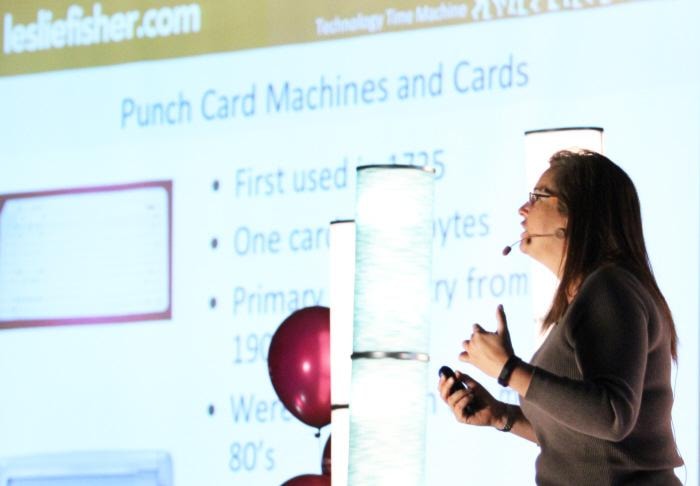As technology advances, so do options for teachers wishing to integrate educational software into their curriculums.
That was the main point in Leslie Fisher’s keynote speech to more than 700 teachers, administrators and planners in education Friday, Sept. 26. She kicked off the Central Alberta 21st Century Technology and Learning Symposium (CTLS) at Ponoka Secondary Campus that provided tips on how to use a variety of technologies in the classroom.
Fisher said her first “technology moment” occurred when she was a young girl in an episode of Emergency!, a television show in the 1970s that depicted the lives of staff at a hospital and a paramedic team. She recalled the episode where the cast of actors had to find and save the life of a person they knew little about.
At one point in the show, a computer technician is able to help them with a computer that used punch cards. “This to me was amazing,” she recalled.
In an effort to find the episode, Fisher made some searches in Google and in 18 minutes had all the information she needed. She pointed out that information is at users’ fingertips.
“Look how quickly I was able to get a memory from seven-years-old,” Fisher stated.
She also referred to a Ditto machine, a 1920s invention used to copy paper. Since then technological advancements have benefitted the world and the education environment.
“We’re moving into a whole new world. We’re going into 3D printers,” said Fisher.
She suggests these printers are going to change the way the world works in a dramatic way. As an example, Fisher said the International Space Station is outfitted with a 3D printer in the event a part is lost or needs to be made.
A company like Lego has to either embrace this new technology or become obsolete. Fisher suggests Lego is at a crossroads in their business and likened their situation to Kodak. In its heyday, Kodak was the largest film company in the world but was unable to envision the future of digital cameras and has since filed for bankruptcy.
Apps changing how teachers educate
Fisher could not contain her excitement over what the future of technology may bring and provided some examples of new technologies that will become more of a reality as they continue to be developed.
One such technology that appeared to excite teachers was one called augmented reality, in which an app on an iPhone or iPad could take photo or video of an object that would come to life on the screen. It became a three dimensional object while filming with the device’s camera.
Wikipedia defines augmented reality as a live direct view of a real-world environment with elements augmented or supplemented by computer graphics or sound. Fisher was able to provide live examples from her iPad by taking pictures of objects and showing on her screen.
She says there are schools using this technology to allow parents and educators to hear or see a student explain a project using augmented reality; a person could take a photo of a student’s project and that student will show up on their device’s screen explaining their idea.
Other apps will translate a document just by hovering a camera over what needs to be translated.
“To me this is such a more vivid way of learning than just simply looking at a book,” stated Fisher.
“Technology is here to stay, let’s embrace it and use it effectively,” she concluded.
